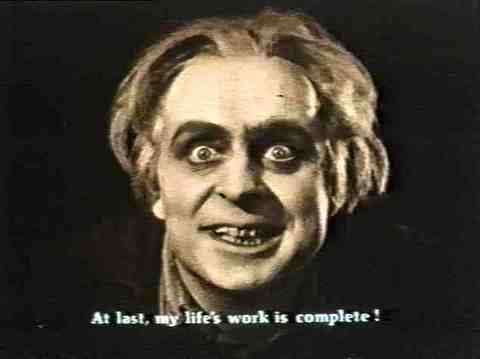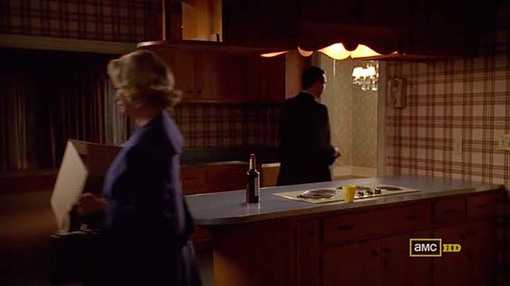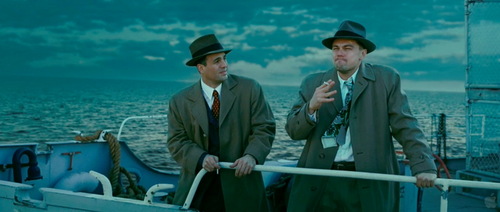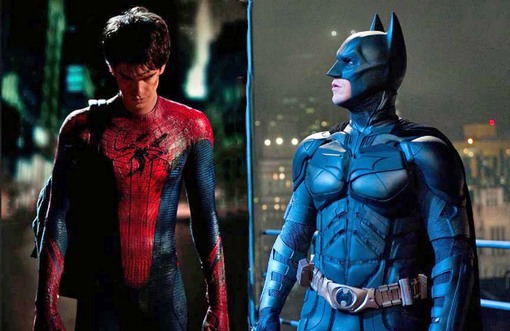
Pretty Woman
Passed along on the Interwebs via Wiley Wiggins. I consider this to be a Lynchian companion piece to Sausage Party.
MORE CLIPS, UPDATES BELOW:

Passed along on the Interwebs via Wiley Wiggins. I consider this to be a Lynchian companion piece to Sausage Party.
MORE CLIPS, UPDATES BELOW:
Overheard after a trailer for the redundant apocalyptic spectacle “2012” at the 2:30 p.m. matinee of “Inglourious Basterds” at the Regal Thornton Place Stadium Cinemas in Seattle, WA, August 22, 2009, spoken unironically by a male in his early twenties:
“I’m tired of watching the world end.”
Me too.
“500 Days of Summer will own you.”
— Peter Travers, Rolling Stone
I have not been able to find the context in which the cutesy ad blurb above originally appeared. It’s not in Travers’ review at RollingStone.com. Maybe he spoke it, or something like it (“It will own you”), in video or podcast remarks. I’ve seen it used in web ads and TV spots. But, really, what was Travers trying to communicate by employing this phrase? That the movie vanquishes you, the viewer? (At least he didn’t say “pwn.”)
What’s the adjectival form of “n00b”?

Let’s start at the end, that is with the last two shots of the “Mad Men” Season 4 final episode, “Tomorrowland.” The penultimate image is a beaut, with Don and Betty in the dark, empty kitchen of the house they once shared. Don is there to meet a real estate agent. Betty, the blonde in the blue Disney Evil Queen coat, has returned to box up some things she “forgot” from the cabinets in the guest bathroom. Don, characteristically, has a secret he hasn’t forgotten about — a fifth of whiskey stashed in the cupboard above the oven. They share a few sips from an old ornate bathroom cup and Betty, ostensibly speaking of the kitchen in her new house which she will probably have remodeled, looks Don in the eye and says, “Things aren’t perfect.”¹
Yeah, it’s a cliché (Betty almost always sounds like she’s reading a script), but in this context it’s also a wonderful moment, poignant and funny. Because she says it almost as though a) she believes “things” actually could achieve a state of perfection; and b) she thinks imperfections are shameful secrets and this is an intimate confession — never mind that Don knows perfectly well what a mess she is. His reply — which could be read as tender (letting her off the hook) or pointed — is delivered/deflected with a gentle smile and received with understanding: “So, you’ll move again.”
Frame from the opening shot — of a pre-1998 version.
C. Jerry Kutner’s contribution to the Contrarianism Blog-a-Thon (“Why Murch’s ‘Touch of Evil’ Doesn’t Make the Cut!”) is generating some discussion over at Bright Lights After Dark. You should look into it.
Meanwhile, Jerry offers an update:
As it turns out, I wasn’t the first person to object to Murch’s version in print. Someone who commented at our blog noted that:
Chris Fujiwara covered some of this ground on the late, lamented, Hermenaut.
And after reading Fujiwara, I agree with him about Murch’s intercutting Susie’s first encounter with the Grandi’s with a scene between Vargas and Quinlan: “One wonders whether if Welles had been allowed to recut the sequence as he wanted, he might not have struggled with it only to conclude that the Susie scene played better uninterrupted.” – Another reason not to like the Murch cut!
The specific changes that were made [from Welles’ memo] are detailed by Laurence French — though oddly no mention is made of the recropping — which I consider to be the Murch cut’s most unforgiveable flaw.
I’ve read that “Touch of Evil” was shot “open aperture” (as many films are) at the standard “Academy ratio” (of 1.33:1 — or 1.37:1 for sound films, from about 1932 through 1953) even though the “intended” ratio when projected may have been 1.66:1 (mostly a European standard) or 1.85:1. The latter format was used for the 1998 “Touch of Evil” DVD which, Kutner argues, chops the top and bottom off Welles’ carefully composed full-ratio 35mm images. Normally, if a 1.85:1 film is improperly projected at the standard ratio, filling the screen from top to bottom, one usually sees boom microphones protruding into the upper part of the frame and other indications that one is seeing things that weren’t intended to be seen. That’s how you know it’s the projectionist’s fault, not the filmmakers’. But this was never the case with “Touch of Evil.” (Stanley Kubrick [“Eyes Wide Shut”] and James Cameron [“The Abyss”] are among the directors who, it is claimed, have composed at least some of their video-era films in wide screen and “full screen” ratios simultaneously, so the image would fill pre-16:9, non-HDTV television screens without losing anything.)
Indeed, in a May 24, 1958, letter to the editor of the New Statesman of London (reprinted at the bottom of French’s second page), Welles writes:
There was no attempt to approximate reality; the film’s entire ‘world’ being the director’s invention. Finally, while the style of TOUCH OF EVIL may be somewhat overly baroque, there are positively no camera tricks. Nowadays the eye is tamed, I think, by the new wide screens. These ‘systems’ with their rigid technical limitations are in such monopoly that any vigorous use of the old black-and-white, normal aperture camera runs the risk of seeming tricky by comparison. The old camera permits use of a range of visual conventions as removed from ‘realism’ as grand opera. This is a language not a bag of tricks. If it is now a dead language, as a candid partisan of the old eloquence, I must face the likelihood that I shall not again be able to put it to the service of any theme of my own choosing.As I read this, Welles states his clear preference for the “old black-and-white normal aperature” over the “new wide screens” that were introduced in the 1950s (along with new widescreen processes such as VistaVision, CinemaScope and the like) — and with regard to “Touch of Evil” in particular. The question (as one correspondent has posed it) was whether Welles really thought he could get away with making a 1:33:1 picture in the late 1950s. But even if he didn’t, he knew the prints would retain that ratio. And the 16mm prints shown by universities and film societies were full-frame. So, he must have known that the film was being seen that way before he died in 1985. I wonder if either of the early versions of “Touch of Evil” was on VHS or laserdisc by then…
UPDATE: Christian Liemke offers some 1:33:1/1.85:1 “Touch of Evil” frame comparisons here.

No modern director is more in love with the artifice of filmmaking than Martin Scorsese, or more overt in his expression of it. From the “drunk-cam” in “Mean Streets” (1973) to the self-consciously stylized performances in films like “Raging Bull” and “King of Comedy,” the William Cameron Menzies opening of “Alice Doesn’t Live Here Anymore” to the ersatz two-strip Technicolor of “The Aviator” to the 1954 Hitchcock psychodrama look of the current “Shutter Island,” Scorsese packs his frames with dense layers of Hollywood history.
Sometimes, as in “New York, New York” (my favorite of his films, along with “King of Comedy,” “After Hours” and “GoodFellas”), he contrasts ’40s, ’50s and ’60s studio gloss with the no-less-mannered “naturalistic” improvisational acting favored by Kazan and Cassavetes from the same era. Likewise, in films like “Shutter Island” he immerses himself and his audience in a world that never existed outside of the movies. “Raging Bull,” for example, isn’t just a boxing picture and a showbiz biopic, it’s a study of boxing pictures and showbiz biopics. “GoodFellas” isn’t just a gangster film, it’s a movie about gangster films. Has any other director offered a nearly four-hour “Personal Journey… Through American Film” (a 1995 guided tour beginning with clips from “The Bad and the Beautiful” and “Duel in the Sun”), followed by another four-hour personal essay on Italian cinema (1999’s “My Voyage to Italy”)?
To salute the surprise success of “Shutter Island” (top of the box-office for two weeks running), I took some excerpts from an introductory interview Scorsese did for the now out-of-print 2005 MGM DVD release of “New York, New York” and interpolated frame grabs from that movie and others. The result might serve as a primer on how to watch any Martin Scorsese picture.
What a sweet little movie “The Wrestler” is.
Warm. Endearing. Really nice.
This may be the first time adjectives like these have been applied to the work of Darren Aronofsky (“Pi,” “Requiem for a Dream,” “The Fountain”) or Mickey Rourke (“Johnny Handsome,” “Sin City”), neither of whom has an on-screen reputation as Mr. Charming. But there’s not a mean or cynical (broken) bone in this movie’s soft-bellied, soft-hearted, battle-scarred, age-tenderized old body.
View image The animated banners, archived, are worth the price of admission alone…
Jonathan Lapper offers an inspired free-associative montage/meditation on the moving part of the movies at Cinema Styles, which you must see. It’s called “Frames of Reference,” a little under seven minutes long, and it marvelously (too marvelous for words, obviously) orchestrates cinematic motion and memories to Oliver Nelson’s “Complex City.” (If you suspect you’re unfamiliar with the great jazz arranger, think “Stolen Moments” — which might make a great subtitle for this reference-packed short subject.) My favorite transition: From “Hiroshima, Mon Amour” to “Citizen Kane.” You’ll see why.
And now, for fans of Richard Lester, Peter Sellers and Spike Milligan (and Leo McKern and Graham Stark and Norman Rossington…), my own movie reference: “Frames of Reference” is “The Tracking, Exploding, Kissing, Watching, Crashing, Throwing, Fainting, Dancing, Drinking, Flying, Falling Backwards Film,” though not necessarily in that order. And that’s not the half of it….
View image Jean-Luc Godard, Pop Star.
Following up on my recent posts about the commercial realities behind mid-century European “art films,” and the various ways critics make sales pitches to exclusive audiences: Here’s something fun and provocative from a 1964 French TV interview with Jean-Luc Godard, excerpts of which are included on the extras disc for the Criterion edition of “Contempt.” (I transcribed the subtitles.) Like famed producer Bruce Dickinson, Godard put his pants on one leg at a time, but once they were on he made hits:
Q: Jean-Luc Godard, with “Contempt” you’re once again on everyone’s lips….
G: So much the better if it helps the movie…. I wouldn’t really care as long as they go to my movies. That’s what’s important.
Q: What do you think of reviews?
G: I think much more highly of them than most people do. It’s probably because I was a critic once, and I said a lot of bad things. I was cruel and mean to a lot of people. And though my opinions haven’t changed, when I read bad reviews, the important thing for me is the discussion that’s taking place. Whether it’s good or bad is not the issue for me….
Q: Do you believe there’s such a thing as a fair review?
G: (shrugs) Yes, but criticism isn’t an artistic creation. It will always be inferior. Seventy-five percent of critics are only in that line of work temporarily. That’s why critics are always bitter and sad towards those they praise and those they disparage.
Q: You became a director after having been a critic. Do you think it’s a step up?
G: Yes, being a critic was a good experience. It’s good training.
Q: Doesn’t it run the risk of stifling the imagination?
G: No. It made me love everything. It taught me not to be narrow-minded, not to ignore Renoir in favor of Billy Wilder, or something like that. I like them both, even though they are extreme opposites. […]
Q: … Even with all her clothes on, [“Contempt” star Brigitte Bardot is] still a gold mine. […] Those who would like to see Miss Bardot undress in a movie made by a bad or vulgar director wouldn’t dare go see it. But with you their conscience is clean because it’s art —
G: Good for them. They’re right. If they find her pretty, as I do, there’s no —
Q: Some of your films have been failures. How does that affect you?
G: One of my films in particular, “Les Carabiniers,” wasn’t even a failure. It was… nothing at all.

In the classroom lesson that wraps up the romantic and thematic threads of “The Amazing Spider-Man,” a high school English teacher takes issue with the old saw about there being only ten (or so) stories in all of human history. She says she believes there’s only one: “Who am I?” This being a remake-reboot of the Peter Parker Becomes Spider-Man origin story, that’s a good thing for this, or any, coming-of-age movie to focus on.
An appealing cast headed by Andrew Garfield and Emma Stone provides all the special effects the movie needs, and they’re far more engaging (for adults, anyway, I would imagine) than the usual clinical computer visuals. (Yes, I *liked* it. Hey, Mikey!) The emphasis is on charm, emotion and comedy — until the third act CGI blowout, but even those scenes give Spidey some real weight and mass for the first time as he swings through the skyscraper canyons of Manhattan. (There’s even a built-in joke about it, with two students of Midtown Science High School discussing some user-uploaded YouTube footage.) The way director Marc Webb (“[500] Days of Summer”) and DP John Schwartzman shoot Spidey and the city, they both seem to occupy a common, more-or-less real physical space. The camerawork isn’t all “Avatar” floaty and fakey, and there’s a lovely shot of Spidey on the Oscorp building with sunlight shimmering off the windows that looks like real glass and steel and sunlight, even though the Oscorp building itself is a CGI creation. (So are the hallways of Morse Science er, Midtown Science High, but you’d never know it.)
From Taylor Mali on “Russell Simmons Presents Def Poetry” in 2002:
In case you hadn’t noticed,
it has somehow become uncool
to sound like you know what you’re talking about?
Or believe strongly in what you’re, like, saying?
Invisible question marks and parenthetical (you know?)’s
have been attaching themselves to the ends of our sentences?
Even when those sentences aren’t, like, questions? You know?
Quentin Tarantino’s “Inglourious Basterds” (that’s QT’s spelling for you) has been greeted with love and hate since it played Cannes last spring. It opens Friday, and to prepare for the occastion, Matt Zoller Seitz, with an able assist from Keith Uhlich, has composed “Quentin Tarantino: Words in Action for L Magazine. It’s very well put-together, and it lets Tarantino riff in his own words.
I find QT’s work alternately exhilarating (his fluid direction) and exhausting/embarrassing (his cutesy, over-written dialog that all sounds the same — a monolog divided up among “characters”). You can see and hear the whole range in this montage.
Matt writes:
Bottom line: unfair as it probably sounds, Tarantino’s still not quite the director I’d personally like him to be — the Tarantino-influenced South Korean filmmaker Park Chan-Wook, whose movies are equally artificial but more emotionally engaging, is much more my speed. But while re-watching QT’s films, I did find myself admiring elements that had previously bugged the hell out of me….
View image Superbad-position: I don’t know what this photo has to do with this post. I just think Michael Cera is a genius and his face is hilarious.
Excerpts from two pieces I’ve read recently that to me (of course) get at the essence of movies, and how we perceive them: First, a paragraph from Jonah Lehrer’s introduction to his book “Proust Was a Neuroscientist” (look for the madeleine on the cover!), a most enjoyable volume dedicated to the proposition that the arts understood science long before science did. (Lehrer, the 26-year-old author, is described in the jacket blurb as a Columbia grad and Rhodes Scholar who “has worked in the lab of Nobel Prize-winning neuroscientist Erik Kandel and in the kitchens of Le Cirque 2000 and Le Bernardin.” His book includes chapters on Walt Whitman, George Eliot, Auguste Escoffier, Marcel Proust, Paul Cezanne, Igor Stravinsky, Gertrude Stein, and Virginia Woolf.)
Unfortunately, our current culture subscribes to a very narrow definition of truth. If something can’t be quantified or calculated, then it can’t be true. Because this strict scientific approach has explained so much, we assume that it can explain everything. But every method, even the experimental method, has limits. Take the human mind. Scientists describe our brain in terms of its physical details; they say we are nothing but a loom of electrical cells and synaptic spaces. What science forgets is that this isn’t how we experience the world. (We feel like the ghost, not like the machine.) It is ironic but true: the one reality science cannot reduce is the only reality we will ever know. This is why we need art. By expressing our actual experience, the artist reminds us that our science is incomplete, that no map of the matter will ever explain the immateriality of our consciousness.On the other hand, the mind is what the brain does. We just have no way of knowing how or why. But this paragraph speaks directly to experience of all kinds, including vicarious or representational ones — and to my conviction that valid criticism of any kind needs to be both empirical (drawing on specific examples) and aesthetic (a subjective attempt to explain how something feels). Blanket terms like “beautiful” or “ugly” can only be defined/refined in this context. I think of it this way: A dog’s butt doesn’t smell “bad” to a dog. And poop doesn’t offend a dog’s sensibilities. Canine responsiveness to scent is roughly 40 times greater than ours, so perhaps you could say that dogs can smell “past” the limitations of our olfactory abilities to detect something more fully dimensional (the way some people savor the flavor of stinky cheese, perhaps). Or, they just like stink, in which case we may consider them to have bad taste. Or, maybe, admire them as perverse primitivist punk rebels who enjoy wallowing in filth for the sheer animalistic pleasure of it. Or would that be anthropomorphizing them? If only dogs could explain what and how they see and smell and hear and feel…
OK, moving on to number two….

Above: Best supporting actress winner Olivia Williams, “The Ghost Writer.”
“The Social Network” has swept the major critics’ groups honors (following NY and LA) with its best picture award from the National Society of Film Critics. From the NSFC website:
The Society, which is made up of 61 of the country’s most prominent movie critics, held its 45th annual awards voting meeting at Sardi’s Restaurant in New York City. 46 members voted. Scrolls will be sent to the winners.
BEST PICTURE
*1. The Social Network 61
2. Carlos 28
3. Winter’s Bone 18
BEST DIRECTOR
*1. David Fincher 66 – The Social Network
2. Olivier Assayas 36 – Carlos
3. Roman Polanski 29 – The Ghost Writer
BEST ACTOR
*1. Jesse Eisenberg 30 – The Social Network
2. Colin Firth 29 – The King’s Speech
2. Edgar Ramirez 29 – Carlos
BEST ACTRESS
*1. Giovanna Mezzogiorno 33 – Vincere
2. Annette Bening 28 – The Kids Are All Right
3. Lesley Manville 27 – Another Year
The eyestrain I got from watching James Cameron’s “Avatar” reminded me why I think so-called “3D” cinema is still a cheap-looking gimmick that hasn’t improved since the View Master was introduced at the 1939 New York World’s Fair. Upon returning home from the movie I wrote:
[Each] layer looks flat, stacked in front of or behind some other layer. So, people for example look like cardboard cutouts rather than rounded figures. What’s worse, if the camera’s depth of field holds something out of focus in the foreground or background, you can’t do anything about it. If you look at something that’s closer or farther away, your eyes have a natural tendency to bring it into focus. 3D camerawork frustrates that instinct. Regular old 2D imagery, on the other hand, does not trick your eyes into trying to focus on something they can’t, because both eyes are always looking at the same plane. All around, fewer headaches.
Martin Anderson has since published a piece at Shadow Locked called “How to avoid getting a 3D headache while watching Avatar,” discussing the problem of stereoscopic photography and illustrated with 2D examples from Hitchcock and Ridley Scott:
It’s the player piano roll, the 8-track cartridge, the Apple Newton, the Microsoft Bob (or Microsoft Sidewalk) of its day — the 1981 RCA SelectaVision Capacitance Electronic Disc! Basically, it looked like a grooved black vinyl LP in a plastic sleeve, but it played video instead of music: “The magic of the RCA VideoDisc, a simple, affordable record that, like magic, can bring not just sound, but sound and pictures — clear, beautiful pictures — right into your living room! A record that can bring you ‘Casablanca’… or Miss Piggy… or Woody Allen… or ‘The Godfather’…” My favorite moment in the promo above is when Jesus approaches Rod Steiger and the chorus sings: “Bring the magic home — with R-C-A!” Remember, too, RCA was the company that brought you the [ahem!] miraculous new Dynagroove and Dynaflex long-playing record formats.
Like its flat circular competition, the silvery 12-inch pre-CD/DVD optical storage disc systems known as DiscoVision or LaserDisc, you also had to turn it over to play, say, the “second side” of a feature film. Discs cost $15 and players between $299 and $500. Sans remote, apparently. None of these new LP-sized disc systems quite caught on with the general public. Soon, Compact Discs would set the standard for optical storage at a diameter of 122 mm (about 4.72 inches), which would also be used for CD-ROMs, DVDs, and DVD-Rs. The question of why digital information of any sort should be encoded onto a cumbersome physical object (requiring needlessly complex delivery systems including shipping, packaging, storage space, a player/recorder separate from the media itself…) is the a technological challenge “home entertainment” companies are still trying to figure out.
View image “Our master video tape has gone to Mastering Control…”
The above is a six-minute overview (“Bring the Magic Home” — look for the trademark skip/stutter in the “Lady Sings the Blues clip), archived by databits, who offers quite a collection of ancient technology guides and promos at YouTube. To watch a guided tour of the SelectaVision production process (including a peek inside the lab with a guy in a shower cap), you can (as they used to say in the early days of the World Wide InterWebs), click here (for Part 1) and here (for Part 2).
“To the people behind the scenes, the people at RCA, it begins with raw materials as pure as those used in medicines — plus a myriad of parts and procedures.”
Liveblogging SNL:
First: Was the cold open lackluster on purpose? Did Alec Baldwin deliberately read the cue cards badly just so he wouldn’t have to look at Sarah Palin? (I worked on an “SNL” when Baldwin co-hosted with his painfully untalented-as-a-live-actor ex-wife, and he’s a million times better than that. Lorne Michaels, too.)
See Baldwin’s comments on Palin’s appearance here.
Second: Because this blog is all about me (see above): How weird to see Sarah Palin in that very hallway where (he suddenly remembered) I was introduced to Paul and Linda McCartney. (That’s the only Beatle, or Beatle spouse, I’ve ever shaken hands with.) My narcissistic perspective: Does Palin deserve to be standing anywhere near that spot? I think not. (Apropos of nothing: You know who I love? Mike Shoemaker and Marci Klein, that’s who.)
Third: Regarding MacGruber: I know, but are there really any rich people who were rich a month ago who aren’t still rich?
Fourth: Simon and Garfunkel Jack-in-the-Box Burger King commercials.
Fifth: Congrats to Amy Poehler and Seth Meyers (and Palin). This is funny:
Herewith, a belated salute, on the occasion of the sailing of the revamped “Poseidon,” to the late, great Shelley Winters. At a party of movie geeks on a rainy Seattle night — the evening of her death (January 14, 2006) — I hoisted a scotch in her memory and toasted some of her greatest moments — which, as it turned out, seemed to revolve around death and water. Not only was she a terrific actress (in comedy and drama), but she is responsible for some of the most memorable liquid exits in movie history. Consider:
View image Sheriff Ed Tom Bell is no city slickster. Still, he thinks knowing how to use a camera might possibly be a good thing when it comes to making a movie.
Two sentences in the New York Times story announcing the line-up for the 2008 Sundance Film Festival jumped out at me as symptomatic of a fashionable but misguided attitude toward the art and craft of filmmaking today:
And some of the more striking, original documentaries were quite unpolished, [Sundance festival director Geoffrey] Gilmore said. “You’d get a sense they’d never touched a camera before.”Now, I am all for striking, original films — including unpolished ones. Among my favorite documentaries of recent years are Chris Wilcha’s “The Target Shoots First” and Jonathan Caouette’s “Tarnation” — both films made with small consumer video cameras by people recording their own experiences over long periods of time. Neither man considered himself a “filmmaker” when he started shooting, but both discovered what they needed to express while making these films. I could not be more enthusiastic about the means of production finally being within the reach of the proletariat (people like me).
But, as I’ve been wondering for some time now: What is behind this popular and patently false critical suspicion that a “well-crafted” movie is automatically phony or inauthentic, while a film that is “unpolished” is considered genuine — automatically real or truthful? This is especially troubling to me when the people expressing this attitude fail to convey a recognition of the distinctions between artistry and production values — or between validity and lack of skill.
Likewise, I’ve never understood why a so-called “independent film” (a term that usually refers to the source[s] of the production financing, if that) should be appreciated or evaluated any differently than a studio-bankrolled film (which may well be a negative pick-up distributed by a major or one of its “dependent” arms). It’s unbelievably hard to get a film made either way, and just because you have studio financing doesn’t mean you won’t be fighting for money or time or resources (and, probably, creative control as well). It definitely means that more of your budget will go to overhead costs. Studios also force you to deal with development execs who may consume a lot of your time and energy trying to put their unwelcome fingerprints on the movie (just to justify their salaries). But even if you get your movie made more or less the way you want to with your indie financiers, there’s no guarantee that your indie distributor (if you get one) won’t demand cuts or changes that don’t necessarily make the film any better or more marketable.
I’ve seen plenty of big-budget Hollywood films made by professionals who evidently knew little or nothing about what they were doing. It’s like they’d never touched a camera (or an editing table or a mixing board) or even encountered an actor before. And it’s not pretty. It isn’t any good, either, but there it is. I’ve also seen low-budget films, shot on video or 16 mm, that exhibit an affinity for cinema, for communicating through images and sound, that no budget or payroll could ever buy. And I’ve seen way, way too many indie movies that have no reason to exist except as somebody’s lottery ticket for a Hollywood deal. They’re as empty as any studio product, just more dishonest about their commercial ambitions.
View image An extreme close-up — up Thomas Jefferson’s nose, that is. Wee Roger O. Thornhill and Eve Kendall are in long shot.
For the Close-Up Blog-a-thon at The House Next Door:
When is a long shot a close-up? When it’s part of an Alfred Hitchcock cliffhanger sequence on Mount Rushmore in 1959’s “North by Northwest,” that’s when.
View image Full profile of Roger on right, as Eve drops right out of the bottom of the picture. The most prominent facial feature in the shot is Jefferson’s schnoz (this could almost be microphotography, if you thought of it on that scale), with Abe Lincoln looking on in semi-Bergmanesque three-quarter profile from below his predecessor’s nostril.
View image Mr. Washington is ready for his close-up now, with a teeny henchman standing to the left of his cheek and miniscule Roger and Eve hanging out between him and Jefferson.
View image Mr. Lincoln. And Leonard. (That would be a tiny Martin Landau.)
Hitchcock is having so much fun with scale and perspective here that I chuckle with delight (even as I tense up) every time I see the, uh, climactic sequence, which ends with an insertion shot — both long shot and close-up, depending on how you look at it — that’s so naughty, so pornographic it will have to wait until after the jump….
